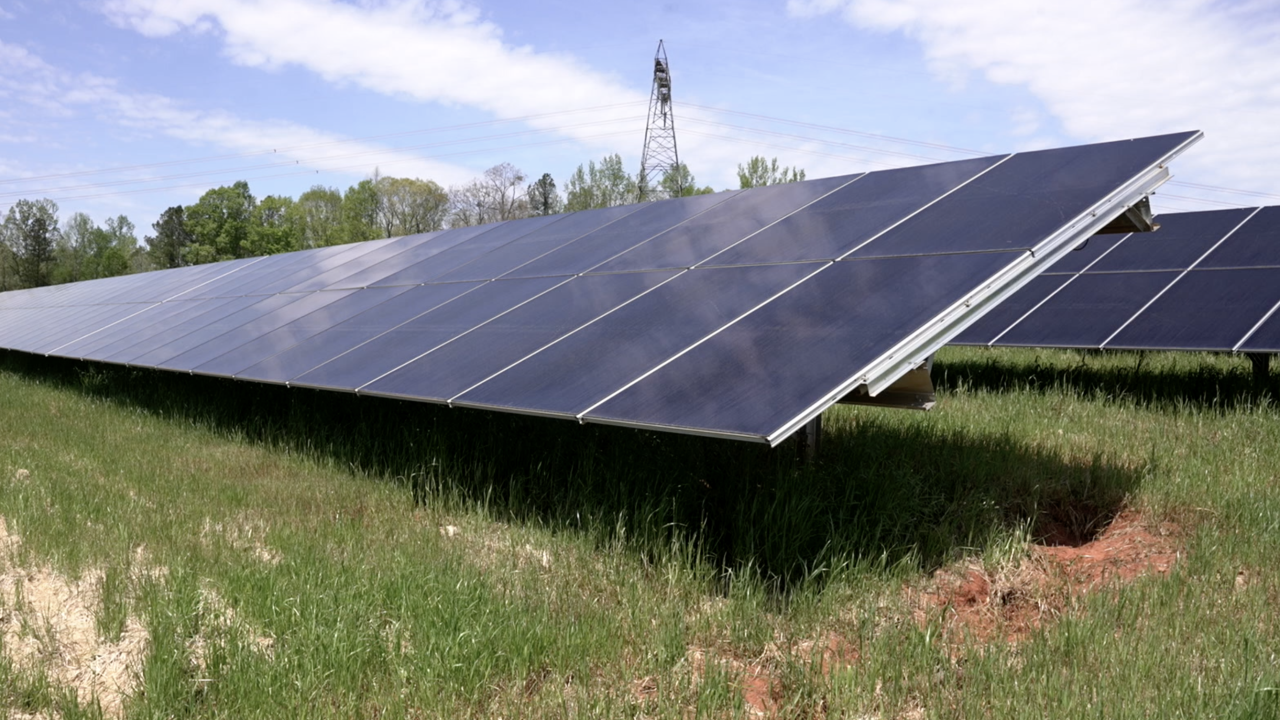PUTNAM COUNTY, Ga. — Ryan Peters believes solar farms can be one of the solutions to creating more clean energy.
“I love to solve problems and I think the energy industry and the transition we’re going to have to make over the next 20 to 30 to 50 years is a huge problem to solve and I want to really be a part of that problem solving,” said Peters, who is an engineer with SolAmerica Energy.
“Typical rule of thumb is that one megawatt is about 200 to 250 homes that it can provide power for so this project again is almost three megawatts so you’re looking at 600 to 800 homes that this project is providing power for,” Peters added.
Eight hundred homes might not sound like a lot, but it’s around 8% of the occupied homes in Putnam County, Georgia. It's something county officials are proud of.
“Our main goal is to make sure our ordinance and our codes are user friendly so those who are wishing or looking to implement solar will have an easy and smooth process,” said Lisa Jackson, the director of planning for Putnam County.
She says the county started creating ordinances and regulations for clean power a few years ago because they knew they would have to adjust.
Advocates hope Putnam County isn't the only part of the country looking ahead.
“Rural communities will certainly be seeing this development and I think what’s important for them is preparing in advanced,” said Heidi Kolbeck-Urlacher, a policy expert with the Center for Rural Affairs.
To meet the Biden administration's goal of a carbon-free electricity sector by 2035, Kolbeck-Urlacher said much of the slack will have to picked up by rural communities.
“Something there’s been a lot of focus on is building out transmission to handle the increased capacity coming with these new clean energy projects,” said Kolbeck-Urlacher.
The solar farm in Putnam County doesn't produce enough electricity to require too much transmission infrastructure, but other areas that take on bigger projects will have to think about how to get the electricity from point A to point B.
But this transition to more clean power could come with big opportunities for these communities as well.
“You have land lease payments, you also have job creation for the infrastructure buildout, and it brings in very significant tax revenue to these communities. This could bring in literally millions of dollars annually,” said Kolbeck-Urlacher.
That is just icing on the cake for creating a cleaner world.
“That’s the ultimate goal, to make us a more green community, more healthy community,” said Jackson.


